Rhenish Expressionism and art since 1945
The collections of the Kunstmuseum focus on three strong points: Rhenish Expressionism (the largest collection in the world), post-war German art (particularly the 1960s to the early 1990s), and an international collection of post-war prints. German artists on display include Georg Baselitz, Joseph Beuys, Hanne Darboven, Anselm Kiefer, August Macke, Blinky Palermo and Wolf Vostell. Selected non-German artists are integrated into the display, such as Robert Delaunay in the Macke section, Richard Long in combination with Palermo, Lucio Fontana with Beuys, and Jannis Kounellis with Gerhard Merz.
August Macke in the Kunstmuseum
Prints collection and video art
The prints collection, featuring around 5,000 works from the 20th and 21st centuries, [5] includes so-called "multiples" by Beuys, illustrated books by Max Ernst, and printed graphics from the Bolliger Collection.
The Oppenheim Collection of video art includes works by Dennis Oppenheim, Joan Jonas, Klaus vom Bruch, Marcel Odenbach and Julian Rosefeldt. [6]
The Videonale festival of contemporary video art, now based at the Kunstmuseum, has taken place biennially in Bonn since 1984. [7]

Bonn is a federal city in the German state of North Rhine-Westphalia, located on the banks of the Rhine. It has a population of over 300,000. About 24 km (15 mi) south-southeast of Cologne, Bonn is in the southernmost part of the Rhine-Ruhr region, Germany's largest metropolitan area and the second biggest metropolitan region by GDP in the European Union, with over 11 million inhabitants. The city served as the capital of West Germany from its formation in 1949 until 1990 and as the capital of reunited Germany from 1990 until 1999 when the seat of government was moved back to Berlin. Bonn is the birthplace of Germany's present day constitution, the Basic Law.

August Robert Ludwig Macke was a German Expressionist painter. He was one of the leading members of the German Expressionist group Der Blaue Reiter. He lived during a particularly active time for German art: he saw the development of the main German Expressionist movements as well as the arrival of the successive avant-garde movements which were forming in the rest of Europe. As an artist of his time, Macke knew how to integrate into his painting the elements of the avant-garde which most interested him. Like his friend Franz Marc and Otto Soltau, he was one of the young German artists who died in the First World War.

The Pinakothek der Moderne is a modern art museum, situated in central Munich's Kunstareal.

Blinky Palermo was a German abstract painter.

The Museum Ostwall is a museum of modern and contemporary art in Dortmund, Germany. It was founded in the late 1940s, and has been located in the Dortmund U-Tower since 2010. The collection includes paintings, sculptures, objects and photographs from the 20th century, plus over 2,500 graphics, spanning Expressionism through classic modern art to the present day.

Julian Rosefeldt is a German artist and film-maker. Rosefeldt's work consists primarily of elaborate, visually opulent film and video installations, often shown as panoramic multi-channel projections. His installations range in style from documentary to theatrical narrative.

The Kunstmuseum Basel houses the oldest public art collection in the world and is generally considered to be the most important museum of art in Switzerland. It is listed as a Swiss heritage site of national significance.

The Museum für Moderne Kunst, or short MMK, in Frankfurt, was founded in 1981 and opened to the public 6 June 1991. The museum was designed by the Viennese architect Hans Hollein. It is part of Frankfurt's Museumsufer . Because of its triangular shape, the MMK is popularly called the Tortenstück. Since 2018, Susanne Pfeffer has been director of the MMK.
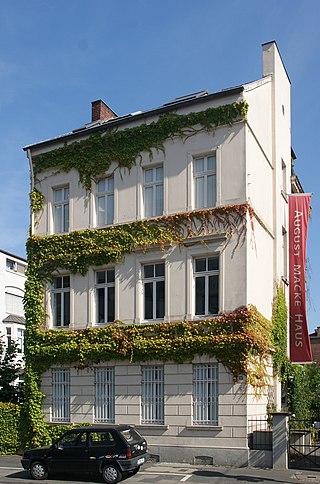
The August-Macke-Haus or August Macke House is a museum in Bonn, Germany, opened in 1991, dedicated to the expressionist painter August Macke. It is located in Macke's former home, where he lived from 1911 to 1914. The museum displays reconstructed interiors and houses temporary exhibitions, usually focusing on Expressionism. In the August-Macke-Haus, Macke's studio has been restored, including furniture from his Tegernsee days. A basic archive of Rhenish Expressionism is available in addition to a reference library.
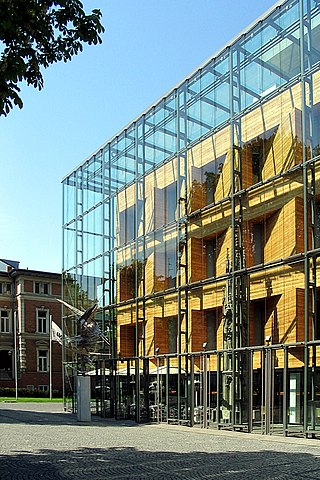
The Rheinisches Landesmuseum Bonn, or LVR-LandesMuseum Bonn, is a museum in Bonn, Germany, run by the Rhineland Landscape Association. It is one of the oldest museums in the country. In 2003 it completed an extensive renovation. The museum has a number of notable ancient busts and figures dating back to Roman times.

Hessisches Landesmuseum Darmstadt (HLMD) is a large multidisciplinary museum in Darmstadt, Germany. The museum exhibits Rembrandt, Beuys, a primeval horse and a mastodon under the slogan "The whole world under one roof". As one of the oldest public museums in Germany, it has c. 80,000 visitors every year and a collection size of 1.35 million objects. Since 2019, Martin Faass has been director of the museum. It is one of the three Hessian State museums, in addition to the museums in Kassel and Wiesbaden. Similar institutions in Europe are the Universalmuseum Joanneum in Graz and the National Museum of Scotland in Edinburgh.
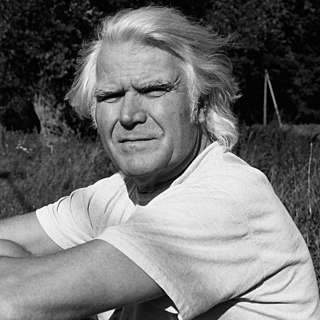
Ivo Ringe is a German artist, who is classified as a concrete art painter. He is also a docent and a curator of international group exhibitions.

Regine Schumann is a German artist who is classified as a light artist and a contemporary art painter and installation artist.
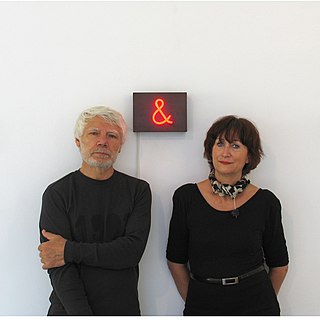
Molitor & Kuzmin are a collaborative duo of visual artists, who are classified as light art and installation artists.

Egon Wilden was a German painter and set-designer.
Rita Rohlfing is a German painter, photographer and installation artist.
Margarethe Jochimsen, née Müller, was a German curator, art critic and museum director.
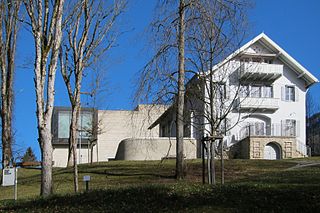
The Franz Marc Museum is a museum located in Kochel am See, Upper Bavaria, dedicated to German Expressionist painter Franz Marc. The museum shows paintings by Franz Marc, and also works of art of his contemporaries and other important artists of the 20th century, in a permanent and in temporary exhibitions.
Jörg Sasse is a German photographer. His work uses found images that are scanned, pixelated and manipulated. He lives and works in Berlin.

Hartmut "Hacky" Ritzerfeld was a German painter of neo-expressive figurative images.























